12 Iconic Folding Knives From the 1900s That Defined EDC Design
Folding knives have been around for centuries, but it was during the 1900s that they began to change the way we think about EDC. EDC design is all about crafting tools that people can easily carry with them for daily use, and these knives were designed with that in mind. The evolution of folding knives in this era was not just about making them more portable, but about improving their usability. These knives were built to fit into the fast-paced lifestyle of the modern world.
This post may contain affiliate links, which helps keep this content free. Please read our disclosure for more info.
Spyderco Delica
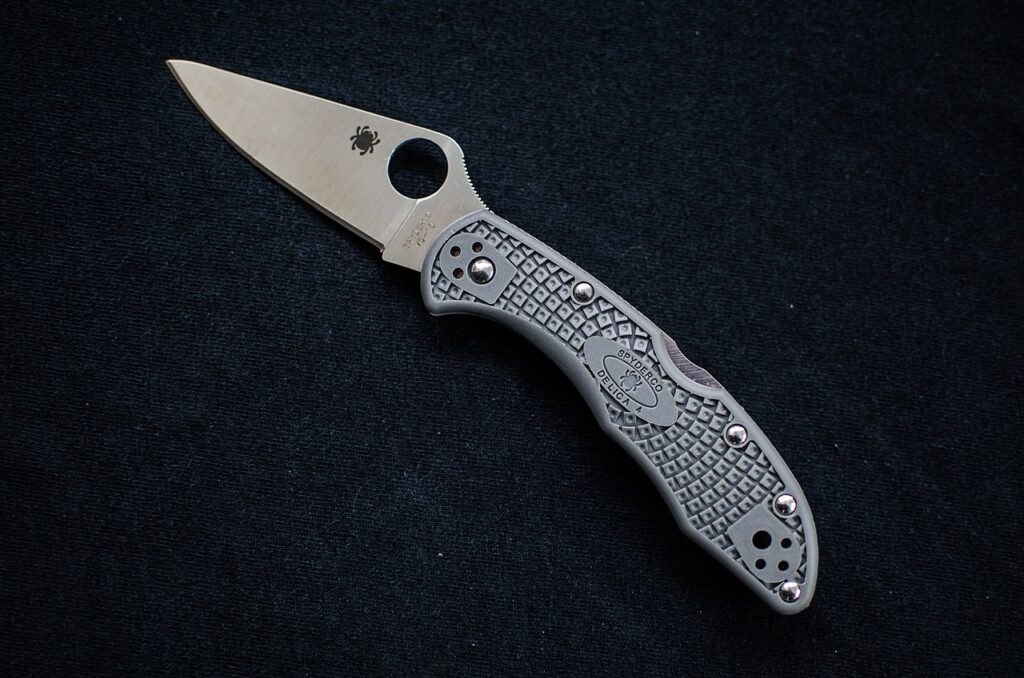
The Spyderco Delica was introduced in 1990 and quickly became a standout in the EDC world. Its lightweight design and ergonomic handle made it ideal for everyday carry. The round hole in the blade allowed for one-handed opening, a feature that set it apart from other knives of its time. The Delica’s compact size and sharpness made it a practical tool for various tasks, from opening packages to outdoor activities. Its introduction marked a shift in EDC design by emphasizing ease of use and portability.
Today, the Spyderco Delica remains a popular choice among EDC enthusiasts. Its continued success is due to its reliable performance and comfortable handling. Used models from the 1990s can be found for around $50 to $70, depending on condition. Collectors appreciate the Delica’s timeless design and the fact that it helped define modern EDC knives. Its lasting popularity proves that simple, effective designs can endure the test of time.
Benchmade 710

The Benchmade 710 was released in 1999 and became a game-changer in folding knife design. It featured the AXIS lock mechanism, allowing for smooth and ambidextrous one-handed operation. The knife was also equipped with a strong, durable blade that made it suitable for both everyday tasks and tougher jobs. Its ergonomic handle and precision design made it stand out as a versatile EDC knife. The 710 is often cited as a knife that influenced the design of future folding knives.
At the time of its release, the Benchmade 710 was hailed as one of the most reliable folding knives on the market. Its AXIS lock quickly became a favorite among knife users for its safety and ease of use. A used 710 from the late 1990s can range from $120 to $180, depending on the model and condition. Collectors seek it out for its unique design and the role it played in shaping modern folding knives. The 710’s influence on the knife industry continues to be felt today.
Cold Steel Voyager
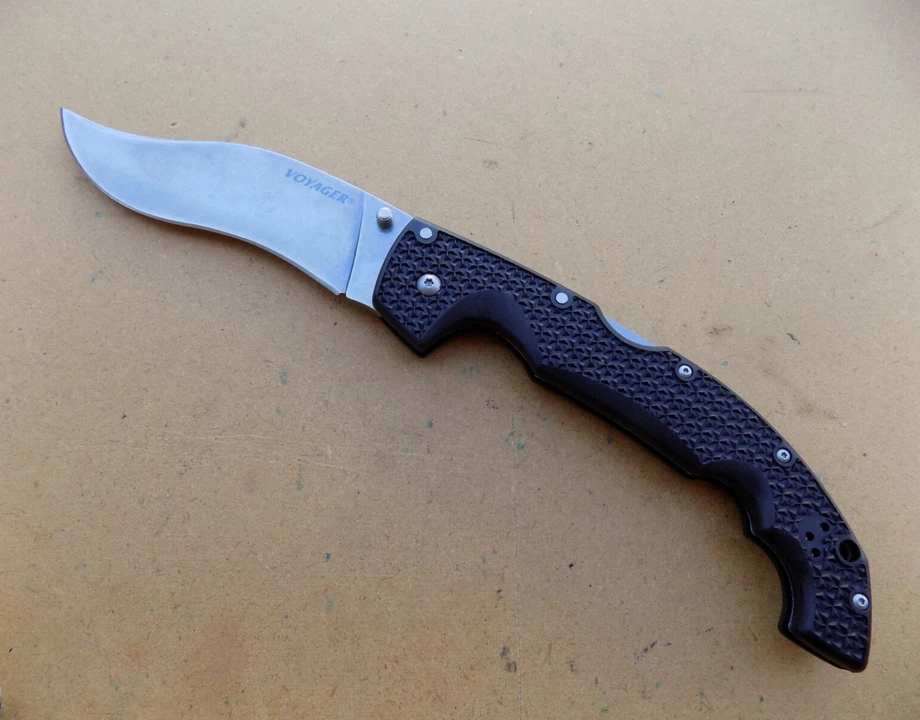
The Cold Steel Voyager series, launched in the early 1990s, was built for strength and durability. It featured the Tri-Ad lock mechanism, which provided superior security and reliability. The Voyager was available in a variety of blade shapes and sizes, making it a versatile option for many different uses. The knife’s construction was designed to handle heavy-duty tasks, and its robust features made it a top choice for tactical users. Its introduction represented a shift towards more durable and functional EDC designs.
The Voyager quickly became popular due to its solid construction and rugged design. It was built to withstand tough environments, making it a trusted tool for military and outdoor enthusiasts. A used Voyager typically ranges from $50 to $100, depending on the condition and specific model. The knife’s toughness and dependability have made it a favorite for collectors. The Voyager’s influence can be seen in many tactical folding knives that followed.
Gerber Gator
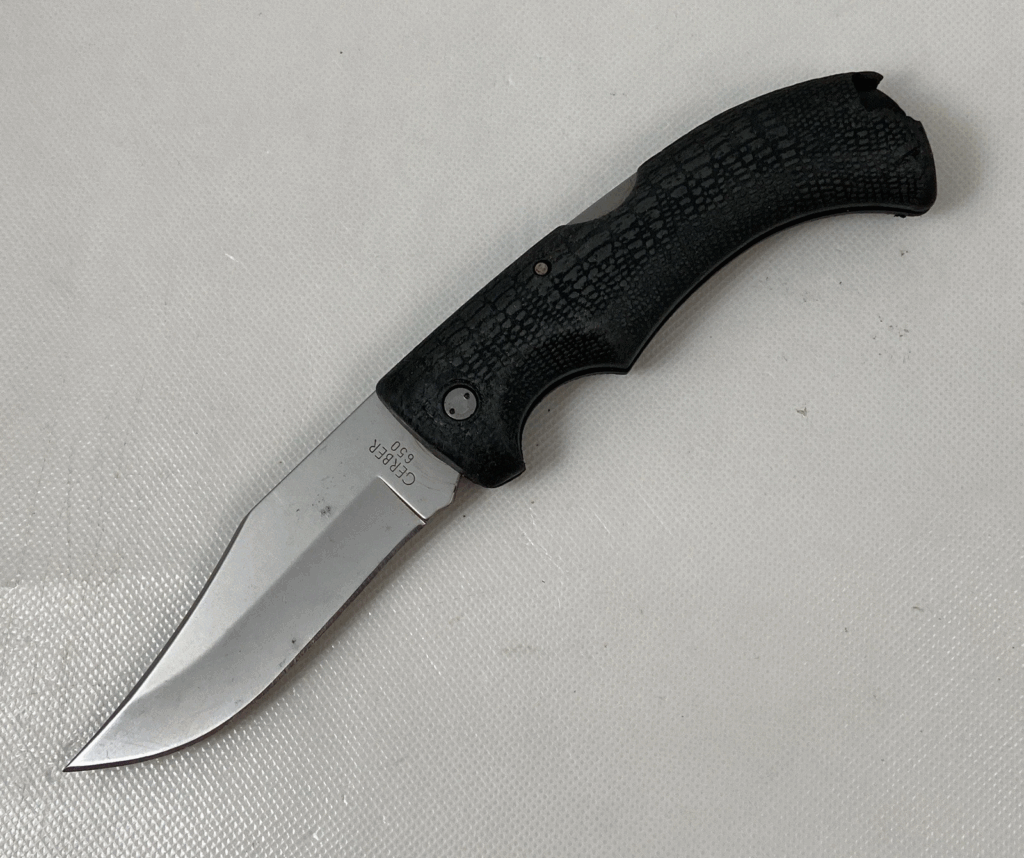
The Gerber Gator, introduced in the 1990s, featured a unique handle design that provided a secure, comfortable grip. Its dual-locking mechanism added an extra layer of safety, making it a reliable choice for EDC users. The knife’s combination of durability and comfort made it particularly popular with outdoor enthusiasts and hunters. Its innovative design set it apart from other knives at the time. The Gator’s versatility and strong construction contributed to its reputation as a dependable tool for everyday tasks.
Gerber’s Gator was designed to be as functional as it was comfortable. The ergonomic handle made it easy to use in various conditions, and its sharp blade could handle a range of tasks. Today, a used Gator can be found for around $40 to $80, depending on its condition. Collectors value its practical design and the comfort it offers. The Gator remains a beloved knife in the EDC community, with its design influencing many subsequent models.
Buck 110 Folding Hunter
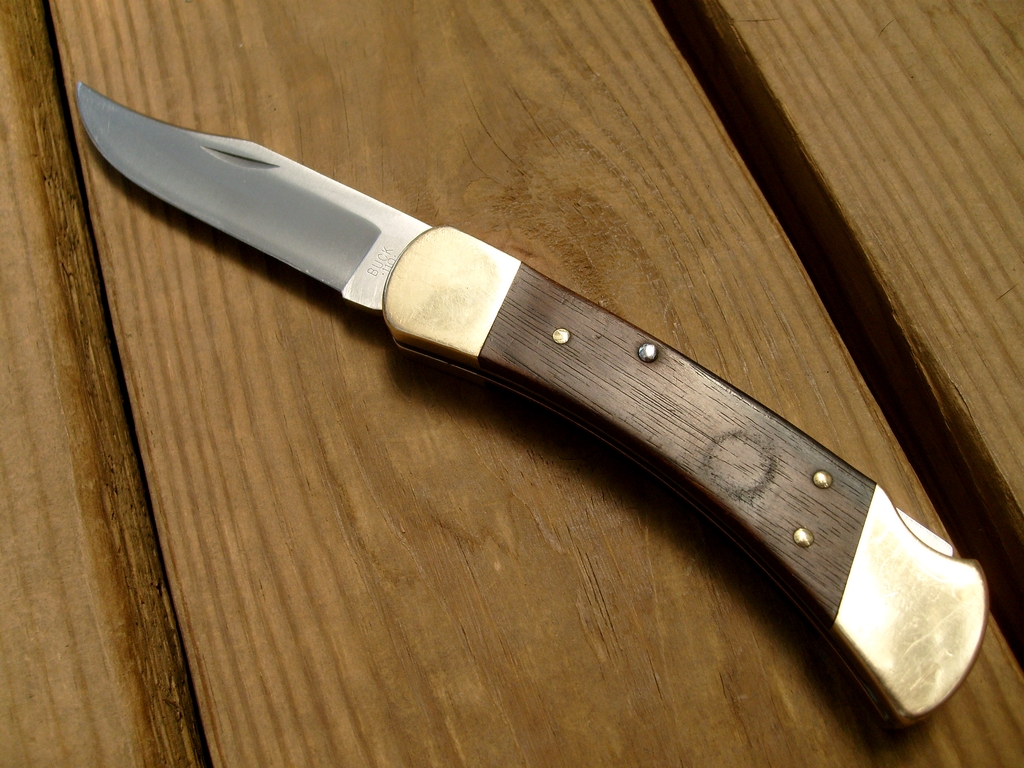
The Buck 110 Folding Hunter originally came out in 1964, but its reintroduction in the 1990s helped cement its place as a classic in the EDC world. Known for its lockback mechanism, the 110 was one of the first folding knives to offer a secure locking feature for safe use. The knife’s 3.75-inch blade and robust construction made it suitable for both outdoor tasks and general utility. Its timeless design and reliable performance made it a popular choice among collectors and users alike. The reintroduction of the 110 in the 1990s reaffirmed its status as a staple in folding knife design.
The Buck 110’s durability and versatility were key features that helped it stand the test of time. Its strong blade and reliable lockback mechanism ensured it could handle tough jobs while remaining easy to carry. A used 110 typically sells for $50 to $90, depending on the model and condition. The 110’s enduring legacy in the EDC world highlights the lasting impact of its design. It continues to be a favorite for both collectors and those who appreciate classic knife design.
Victorinox Swiss Army Knife
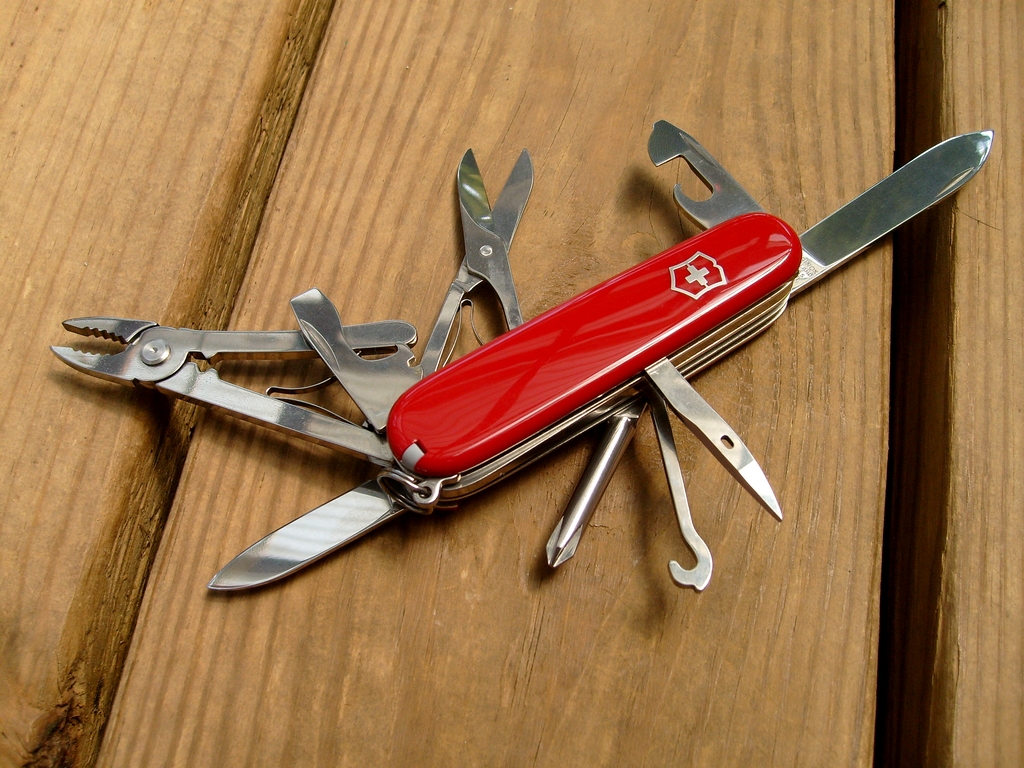
Victorinox’s Swiss Army knives from the 1990s continued to carry the brand’s tradition of multifunctionality. Popular models like the Spartan and Tinker offered a wide range of tools packed into a compact, reliable package. These knives became synonymous with versatility, as they included everything from screwdrivers to bottle openers. The Swiss Army knife was the epitome of practicality, making it an essential tool for everyday tasks and emergencies. Its continued success was a result of its design that combined numerous functions into one portable tool.
The 1990s models built on the Swiss Army knife’s reputation for multi-tool functionality. Whether for camping, everyday carry, or travel, these knives provided users with a variety of tools in a single, easy-to-carry package. Used 1990s models range from $30 to $60, depending on the model and condition. Their design and adaptability made them a reliable companion for many people around the world. The Swiss Army knife remains an iconic tool that continues to influence EDC designs today.
CRKT M16
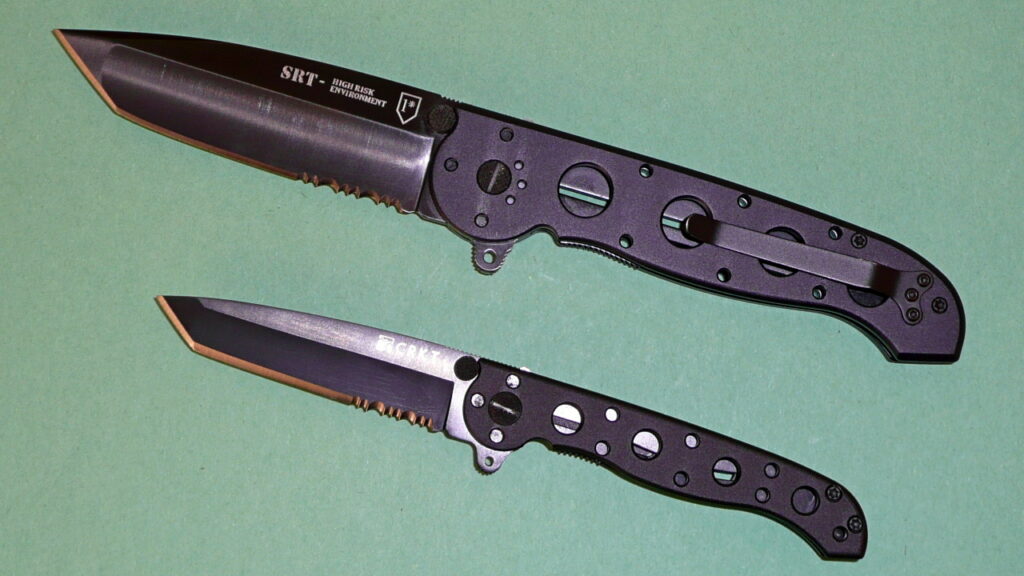
The CRKT M16, released in 1999, featured the Carson Flipper, a unique mechanism that allowed for quick and easy blade deployment. Its streamlined design made it an excellent choice for those looking for a practical, efficient knife for everyday carry. The M16’s robust construction and versatile blade made it suitable for a variety of tasks, from cutting through rope to opening packages. The knife’s affordability and solid design made it an instant hit among EDC users. Its introduction helped set the bar for folding knives in the late 1990s.
The M16’s innovative design and ease of use made it a standout in the EDC world. Its Flipper mechanism allowed for quick blade access with minimal effort, making it ideal for those who needed a reliable knife at all times. A used M16 typically ranges from $40 to $70, depending on the model and condition. Its smooth operation and secure lock mechanism made it a favorite for tactical and general use. The M16 influenced the development of many folding knives that followed.
SOG Flash I
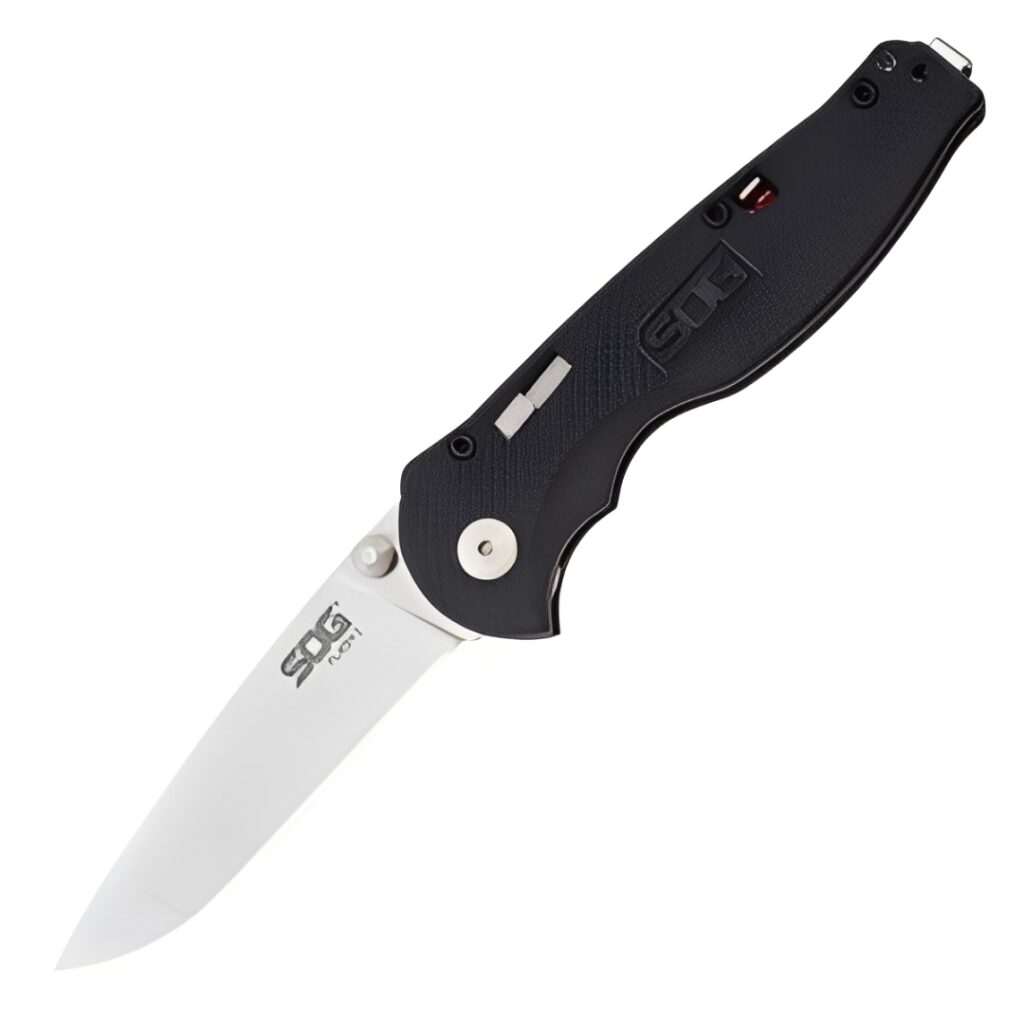
Released in 1999, the SOG Flash I was a compact and lightweight folding knife that featured an assisted opening mechanism for quick deployment. Its slim profile and ergonomic handle made it easy to carry and comfortable to use for a variety of tasks. The Flash I’s sleek design and efficient functionality made it ideal for those who valued both practicality and speed. The knife’s smooth action and secure lock made it a standout in the EDC market. It was one of the early knives to feature assisted opening in a compact form.
The SOG Flash I was designed to be fast, efficient, and easy to use. Its assisted opening mechanism allowed for quick blade deployment with a simple push, making it a favorite among EDC users. Today, the Flash I can be found for around $50 to $80, depending on its condition and model. Its design was a precursor to many modern folding knives that feature assisted opening. The Flash I remains a reliable choice for those who need a fast and efficient folding knife.
Kershaw Leek
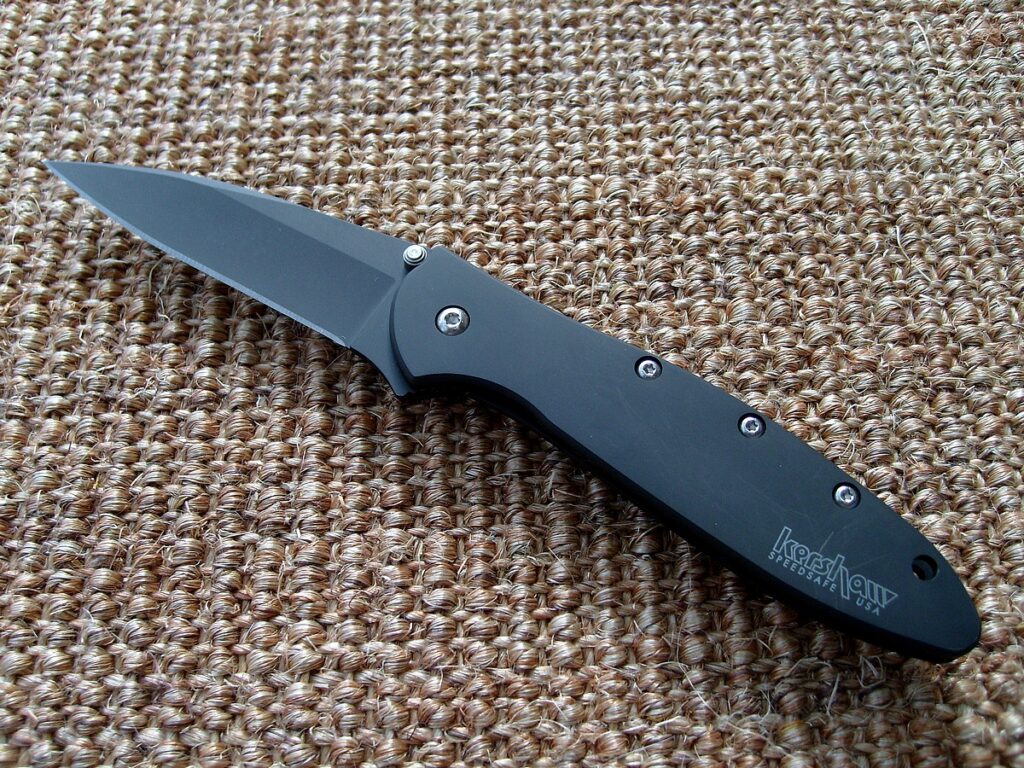
The Kershaw Leek, introduced in 1999, was designed by renowned knife maker Ken Onion. It featured the SpeedSafe assisted opening system, allowing for easy, one-handed blade deployment. The knife’s slim, sleek profile and high-performance blade made it a popular choice for EDC enthusiasts. Its stainless steel construction and precision design helped make it both durable and stylish. The Leek set the stage for many modern folding knives, particularly those with assisted opening mechanisms.
The Leek’s thin profile made it perfect for everyday carry, while its high-quality blade ensured it could handle various tasks with ease. The SpeedSafe system made the Leek easy to open with just one hand, which added to its appeal for those in need of quick access to a blade. A used Leek from the late 1990s can be found for approximately $40 to $70, depending on the model and condition. The Leek’s design continues to influence modern folding knives today. Its simplicity and functionality are the key reasons it remains a favorite among EDC users.
Emerson CQC-7
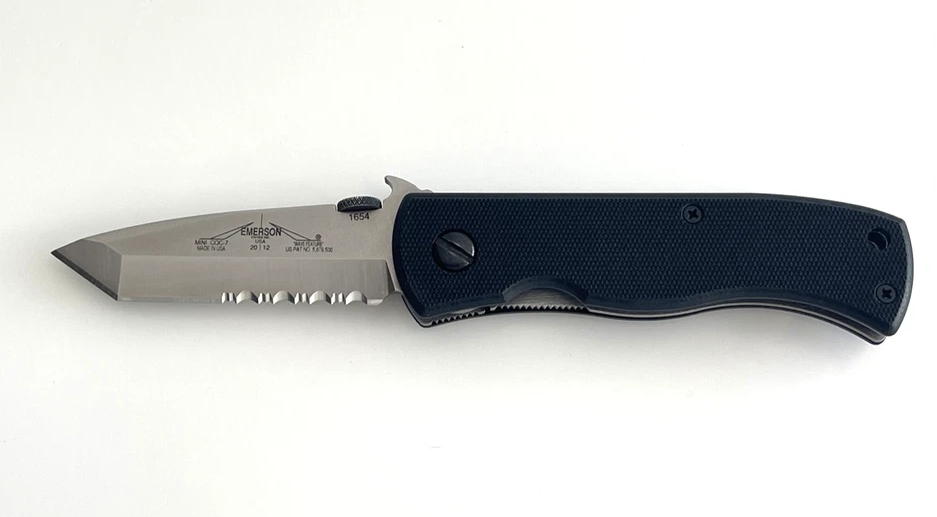
The Emerson CQC-7, introduced in the 1990s, became a tactical favorite with its distinctive chisel grind and wave feature for quick blade deployment. Its rugged build and reliable locking mechanism made it ideal for heavy-duty use. The CQC-7 was designed for military and law enforcement, offering a knife that could withstand the harshest conditions. The wave feature allowed for quick deployment when the knife was drawn from the pocket, setting it apart from other folding knives. This innovation helped the CQC-7 gain widespread popularity.
The CQC-7 was designed for users who needed a fast and reliable blade in critical situations. Its chisel grind and tactical design made it ideal for combat and survival situations. A used CQC-7 from the 1990s typically ranges from $150 to $250, depending on condition and model. The CQC-7’s tactical design influenced many knives used by military and law enforcement. Its legacy continues in the world of tactical folding knives.
Al Mar SERE 2000
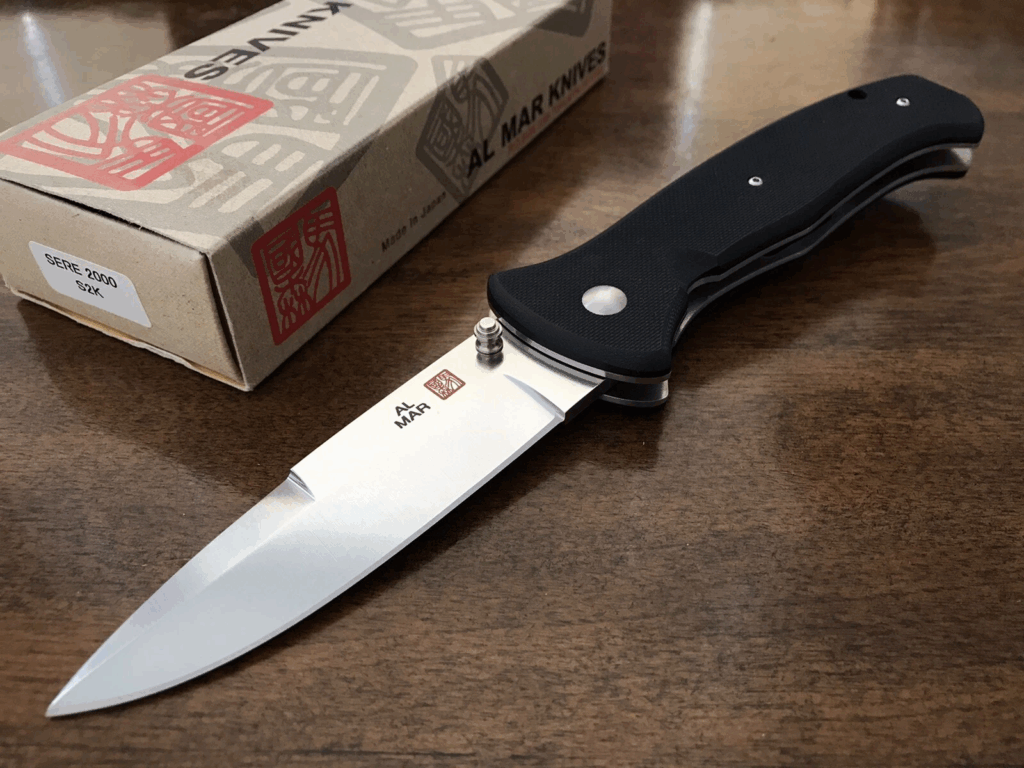
The Al Mar SERE 2000 was introduced in 1997 as a survival and tactical knife designed for extreme conditions. Its ergonomic handle and strong construction made it suitable for both military and outdoor use. The knife’s combination of strength and versatility set it apart from other folding knives of the time. The SERE 2000’s sleek design and practical features made it a favorite among collectors and tactical users. Its ability to handle demanding tasks made it an essential tool for many outdoor enthusiasts.
The SERE 2000’s design emphasized practicality and strength, making it ideal for use in harsh environments. The knife’s robust construction and reliable lock mechanism ensured it could perform in challenging conditions. Today, a used SERE 2000 can be found for around $200 to $300, depending on condition and model. Its design continues to influence survival and tactical knives today. The SERE 2000 remains a highly sought-after knife among collectors and tactical users alike.
Cold Steel Recon 1

The Cold Steel Recon 1 was released in 1999 and quickly became known for its toughness and reliability. Its Tri-Ad lock mechanism offered superior security, and its variety of blade shapes made it versatile. The Recon 1 was designed for tactical use, with a blade that could handle tough jobs and a grip that ensured control in all situations. The knife’s rugged design made it a favorite among military personnel and outdoor enthusiasts. Its introduction helped set the standard for tactical folding knives.
The Recon 1 was built to endure tough conditions, and its Tri-Ad lock system made it one of the safest folding knives on the market. Its ability to handle heavy-duty tasks with ease made it a top choice for tactical and survival users. A used Recon 1 can be found for around $100 to $150, depending on the model and condition. The Recon 1’s solid build and secure lock continue to influence tactical folding knife design. It remains a go-to choice for anyone looking for a reliable, durable folding knife.
This article originally appeared on Avocadu.
